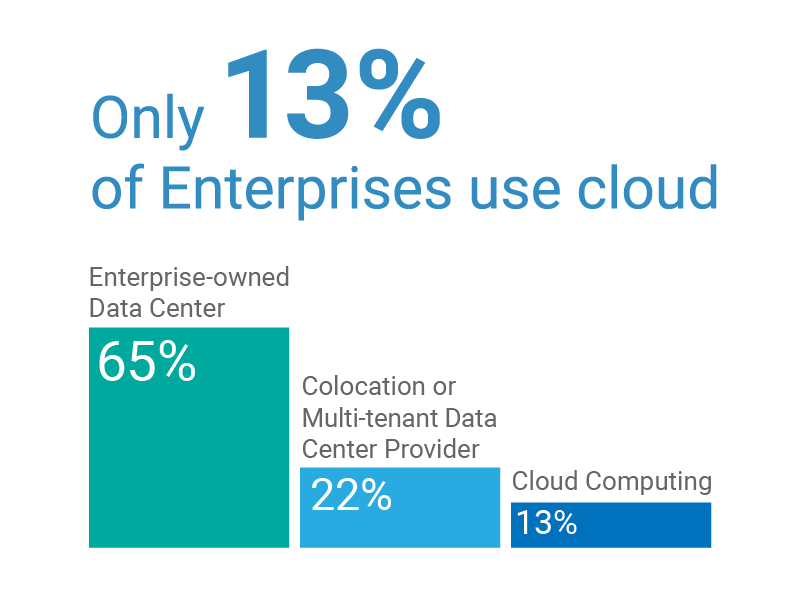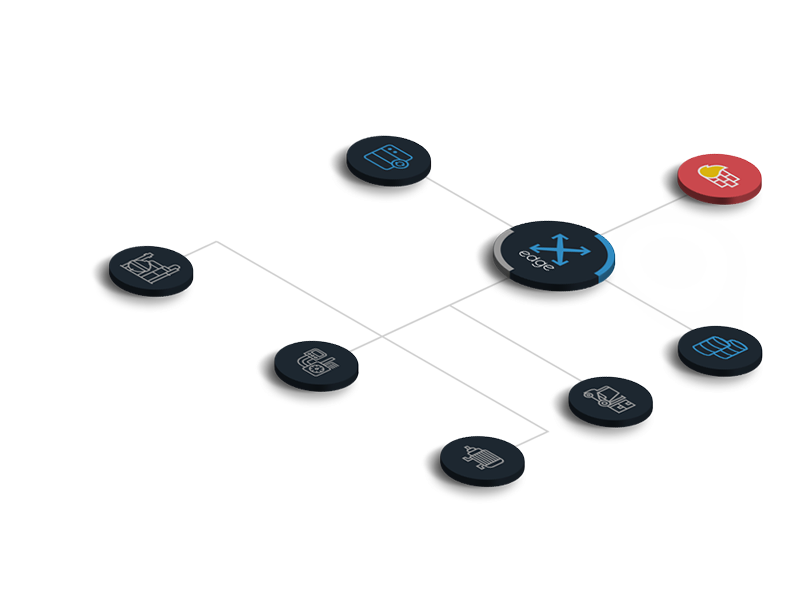Contrary to what you might think, you don't need cloud providers or platforms to run your enterprise IoT project. In fact, it might be to your advantage to just stick to edge computing.
If you're considering an industrial Internet of Things (IoT) project then you're probably wondering how to integrate it with the cloud. After all, almost any cloud vendor or IoT platform provider will tell you that cloud-based services are critical to your implementation plans.
That's only natural. These companies stand to gain from selling cloud services. But while the cloud is certainly key for most consumer offerings, it is not for enterprise projects. This is good news since enterprise cloud adoption is still in its infancy.
According to the Uptime Institute's 2017 Data Center Industry Survey, only 13% of enterprises have moved their assets to the cloud. The remainder still depends on traditional data centers, and in 65% of cases, these aren't even shared facilities.

This means that if you are an enterprise organization then the chances are you still haven't seen much sense in moving to the cloud.
You probably don't have any experience of it, either, which could mean adopting cloud services for your enterprise IoT project is a significant challenge. Luckily, in many cases, it's not necessary. The key is in integration.
The 'I' in 'IoT' stands for 'Internet' but could just as easily stand for 'integration' in an enterprise setting.
Many industrial IoT applications are focused on integrating sensor data streams with your business processes, to help you achieve outcomes such as improved innovation, predictive maintenance or increased automation.
While cloud has its place in enterprise and industrial IoT, it is by no means a must-have. In many cases, edge computing can help you check off all of your requirements without relying on the cloud.
And it can do so regardless of whether you are intending to capture and process data within your firewall or take feeds from beyond your perimeter defenses, for example from sensors in the field, and bring them back for analysis.

The key solution architecture components that you need in order to achieve this are:
- An intelligent edge computing platform for data collection, normalization, filtering, aggregation and anomaly detection. If an anomaly is detected, then real-time local actions can be triggered with ultra-low latency.
- A central edge node to act as an aggregation point for all your distributed data sources, and apply workflow rules, deliver notifications and integrate with your enterprise systems on an event-driven basis.
- Edge integration with your data center storage system. With streaming data processing, you can move away from old-school batch integration and enable real-time automated intelligent processes.
- Your choice of data storage, analytics, business intelligence and prediction software.
Some of the advantages of basing your industrial IoT project on edge computing rather than on the cloud include:
- Lower operating cost. Processing and filtering data at the edge means you can often get away with much lower bandwidth requirements and traffic volumes than you would be looking at with a traditional cloud-based deployment. This can help cut your operating costs.
- Ultra-low latency. Keeping everything in-house makes it easier to ensure you can achieve the latency levels you need for your industrial IoT processes to operate in real time. Latency is further improved by processing data at the edge rather than centrally.
- Quicker deployment times/ Time to market. Although cloud-based deployment is sold on being quick and easy, the fact remains that if you don't have a cloud provider then you still have to go through a potentially lengthy selection and integration process to use one.
- Improved data security. By keeping your data on your own computing platforms at all times, you can maintain full control over security and access protocols. This may be a key factor in IoT deployments that involve a measure of regulatory compliance.
- Enhanced resilience. Cloud-based IoT models may suffer when connectivity is compromised. With autonomous edge computing, though, you can carry on processing IoT data even when your systems are offline.
- Reduced deployment risk. Since you are essentially building on your existing infrastructure, there is less of a risk of getting things wrong, particularly if your in-house team has no cloud experience.
The bottom line is that you can go ahead and develop your IoT project today without having to worry about the cloud… no matter what you may have read or heard.
![]() This article was written by Göran Appelquist, currently CTO at Crosser. Goran has 20+ years of experience of different leading positions in high-tech companies. Originally the article was published
This article was written by Göran Appelquist, currently CTO at Crosser. Goran has 20+ years of experience of different leading positions in high-tech companies. Originally the article was published


